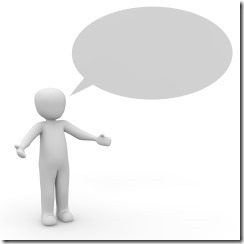It’s something we all should do but it seems to rarely happen. What is it? While I’m not endorsing this site, MindTools does have a pretty good description. Wikipedia also has a page on it (see Active Listening). I did like the warning at the top of the page in Wikipedia that talks about weasel words. Perhaps that falls in like with double speak. Whatever the definition the point is, that active listening is rarely practiced.
When Speaking
Ok, so now you know a little bit about active listening, heck maybe you already practice it in principal. When I’m talking with someone, I go into the conversation expecting that they will not be an active listener. Since I can’t make someone listen, I need to adjust my message so that the important parts come across. This is especially challenging when the message is not going to be accepted easily by the listener. For example, when giving constructive criticism to an employee, I expect them to be practicing Active Thinking. Funny right? The act of hearing only a few words of your topic then immediately form a rebuttal. It’s during the rebuttal phase that practicing Active Listening becomes a challenge. It’s during this process that I put things in black and white. I know they are not going to listen fully. So backing it up in writing reduces the chance of ambiguity. Is this fool proof? No, but I’ve found that it is significantly more successful than just “saying it”.
 Perfection vs Perception
Perfection vs Perception
Ok, perfection is a fictional concept that can never be obtained. So why am I even bringing it up? Key to my practice of Active Listening is to accept that I don’t have all the answers. Also, my point of view is a matter of my perception. I accept that the person already has a different perception and by listening to their contribution to the conversation helps me form a better idea of where they are coming from. This is a process that will never be perfect. My goal with every conversation is to gain a little more insight into their perception. This helps improve future messages to achieve a higher chance of getting through.
Sound bites just a political thing?
Or maybe just the news? Sound bites are used because they are effective. Short simple statements with intentional pauses have been shown to increase comprehension. I’ve used this technique when dealing with particularly difficult people. Me? I’m difficult? To some people I’m sure I am. My goal is to get my message across at the office. It’s not a social hour. When in a social situation, I‘m not worried about clear and complete understanding. As long as a good time was had by all, I call that a winner. By the way, I found that using sound bites for humor can be pretty fun too.
So while this short blog may not be overwhelmingly educational. I enjoyed writing it and sharing some of my thoughts on Active Listening. Writing this is my way to help me to remember to use Active Listening especially during stressful situations.
